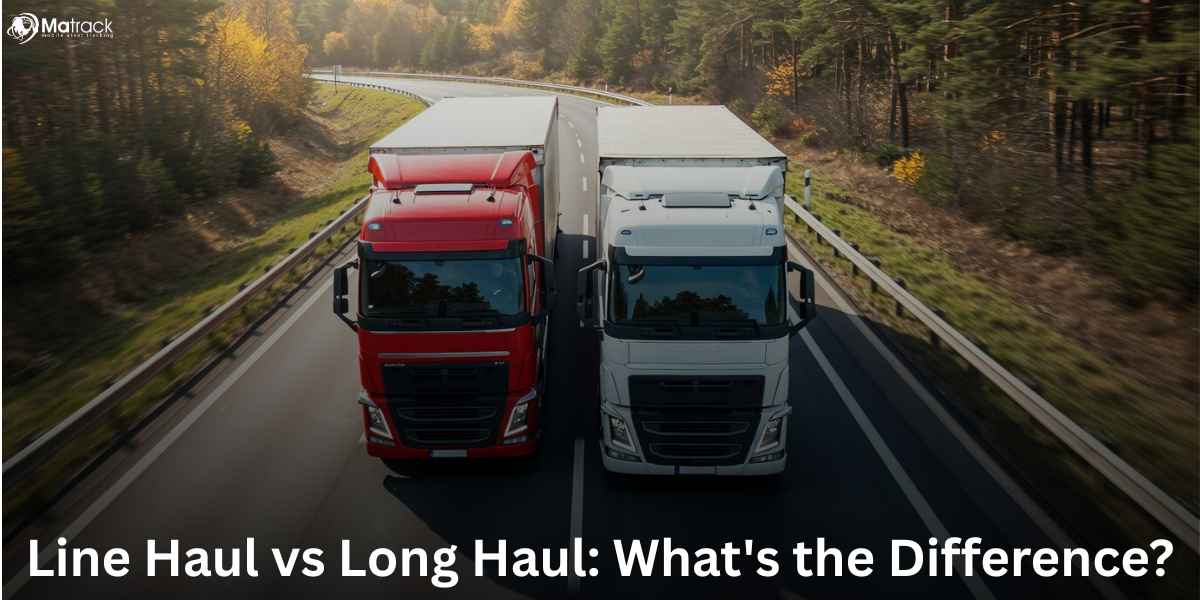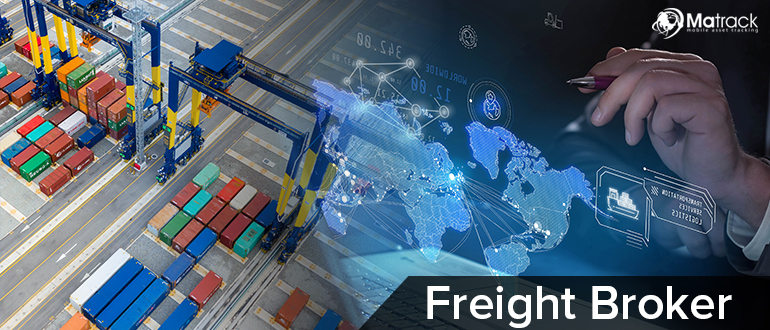Key Takeaways:
- Line haul moves freight between fixed regional points on scheduled routes, making it ideal for time-sensitive and cost-efficient local distribution.
- Long haul covers large distances across states or countries, supporting full truckload shipments and extended supply chains.
- Line haul drivers work predictable shifts and return home daily, while long haul drivers stay on the road for days or weeks to complete deliveries.
- Choosing between line haul and long haul depends on shipment distance, delivery speed, and the operational needs of the supply chain.
What is Line Haul?
Line haul means moving goods between two fixed points, such as major terminals or distribution centers. These routes stay the same every day, making planning simple and reliable.
Most line haul trips cover medium distances, usually between 200 km and 1,000 km. This setup helps carriers keep delivery times consistent and avoid delays.
Line haul trucks usually carry shipments for several customers at once to make better use of space. This approach keeps regional freight moving efficiently while controlling costs.
What Are Different Types of Line Haul Trucks?
Line haul trucks come in different forms, and each one fits specific routes, cargo types, and driver needs. The choice of truck directly affects how smoothly goods move between hubs and terminals.
Day Cab Trucks
Day cabs are built for shorter line haul trips where drivers return home at the end of their shift. Without a sleeper compartment, these trucks are lighter, easier to handle, and more fuel-efficient on routes that don’t require overnight stays.
Sleeper Cab Trucks
Sleeper cabs include a small resting space behind the driver’s seat, making them ideal for longer line haul routes. Drivers use them on trips that stretch beyond a single day or require overnight stops, especially on runs over 600 km.
Straight Trucks
Straight trucks integrate the cab and the cargo area into a single unit, making them ideal for carrying light loads on shorter routes. Their compact design helps carriers navigate urban areas and make quick deliveries between nearby hubs.
Pup Trailers
Pup trailers are small trailers, usually pulled in pairs or triples to move LTL freight. They’re common on busy regional routes where flexibility is key, as they make sorting and unloading at terminals much easier.
Intermodal Line Haul Trucks
Intermodal trucks move shipping containers between rail yards, ports, and terminals as part of a larger transport network. These trucks help link road and rail systems, keeping freight moving smoothly across long distances.
Related: How to Drive a Semi-Truck?
What Does a Line Haul Driver Do?
Line haul drivers play a key role in moving freight safely and efficiently between terminals, hubs, and distribution centers. Their responsibilities focus on transport, safety, and reliability on every trip.
- They transport goods on scheduled routes, usually covering distances between 200 km and 1,000 km.
- Drivers load and unload freight securely, using equipment that prevents damage.
- They tie down shipments with ropes, blocks, or straps so loads stay stable during transport.
- Choosing the best route to meet delivery deadlines is part of their daily work.
- Drivers review and sign load paperwork to confirm shipment details.
- They stay in touch with dispatch teams to coordinate schedules, routes, and updates.
- Recording driving hours helps them stay compliant with safety regulations.
- When bad weather occurs, drivers adjust their driving to protect cargo and stay safe.
- They maintain the commercial vehicle, keeping it clean, checking systems, and handling minor upkeep to ensure everything runs smoothly.
- Monitoring fuel and oil levels helps keep the truck operating efficiently.
- Between trips, drivers may help with warehouse tasks, such as sorting packages or organizing freight.
How to Become a Line Haul Driver?
Becoming a line haul driver requires meeting specific qualifications, gaining experience, and following clear steps. Each stage prepares you for safe and reliable freight transportation between hubs.
Get a Commercial Driver’s License
You need a valid commercial driver’s license, usually a Class A CDL, to operate large trucks with trailers. This requires passing both written and practical driving tests through an approved training program.
Gain Driving Experience
Most line haul carriers prefer drivers with at least one to two years of commercial driving experience. Starting in local or regional trucking helps build safe driving skills and knowledge of freight handling.
Maintain a Clean Driving Record
Line haul employers check driving records for safety and reliability. A record without serious violations or accidents improves job opportunities in this field.
Learn Freight Handling Skills
Line haul drivers are responsible for loading, securing, and unloading cargo safely. Knowing how to handle freight protects goods and keeps trips efficient.
Understand Digital Tools
Modern line haul work relies on electronic logging devices and route planning systems. Learning to use these tools ensures you can track hours and follow delivery schedules accurately.
Apply to Carriers
Once qualified, you can apply to line haul carriers that operate regional and national routes. Many of these jobs offer consistent schedules and allow drivers to return home after shifts.
Complete Employer Training
Most carriers provide specific training on company equipment, safety standards, and delivery procedures. This helps new drivers prepare for daily responsibilities on the job.
Importance And Operational Challenges In Line Haul
| Why Line Haul Is Important | Operational Challenges in Line Haul |
| Line haul improves efficiency in regional supply chains. | Terminal coordination errors increase dwell times. |
| It reduces cost per shipment by combining customer goods. | Load imbalances raise costs and reduce efficiency. |
| Predictable schedules help warehouses plan labor. | Weather and traffic delays disrupt fixed routes. |
| It supports time-sensitive industries like retail, pharma, and e-commerce. | Driver punctuality and equipment reliability are critical. |
| Dedicated routes minimize transit delays. |
What is Long Haul?
Long haul means transporting goods over large distances, often crossing several states or even entire countries. It focuses on full truckload shipments that move straight from the starting point to the final destination without stopping at terminals.
These trips usually cover more than 1,000 km and form the backbone of national and international supply chains. Long haul keeps goods flowing between manufacturers, ports, warehouses, and major distribution centers across vast regions.
Know More: Complete Guide On Long-Haul Trucking
What Are Different Types of Long Haul Trucks?
Long haul trucks are built for comfort, endurance, and the ability to cover thousands of kilometers without frequent stops. These vehicles support drivers on extended trips that take them across states or countries.
Sleeper Cab Trucks
Sleeper cabs give drivers a place to rest during multi-day hauls. Most long haul trucks include spacious sleeping areas with beds, storage, and sometimes small appliances to help drivers stay comfortable on the road.
Heavy-Duty Tractor-Trailers
Heavy-duty tractors pull full truckload shipments over long distances. They’re designed with large tanker trucks, powerful engines, and aerodynamic features that make highway driving more efficient.
Specialized Long Haul Trucks
Some long haul trucks are fitted for specific types of cargo, like refrigerated goods, hazardous materials, or oversized equipment. These trucks use custom trailers and safety features to meet the demands of industries that need specialized transport.
Related: Types of Freight Trucks
What Does a Long Haul Driver Do?
A long haul driver is responsible for moving full truckload shipments across long distances. The driver ensures that goods are delivered safely, securely, and on time to the final destination.
- Transporting goods across multiple states or regions.
- Securing cargo to prevent shifting or damage during extended trips.
- Planning routes for efficiency and compliance with regulations.
- Communicating with dispatch about delivery progress and updates.
- Recording driving hours to follow hours-of-service rules.
- Managing rest breaks and overnight stays during multi-day trips.
- Inspecting and maintaining the truck to ensure safe operation.
Importance and Operational Challenges in Long Haul
| Importance of Long Haul | Operational Challenges in Long Haul |
| Moves goods across states or countries to connect national markets. | Managing driver fatigue on multi-day trips. |
| Supports industries that depend on large-scale distribution. | Controlling high fuel costs over long distances. |
| Enables full truckload deliveries directly to final destinations. | Maintaining vehicles that stay on the road for weeks. |
| Extends supply chain reach across vast regions. | Handling delays from weather, traffic, or border checks. |
| Keeps essential goods flowing between manufacturers and retailers. | Following complex regulations across multiple regions. |
What are the Key Differences Between Line Haul and Long Haul?
Line haul and long haul both involve transporting freight, but they differ in distance, work schedule, pay, and operational demands. The table below highlights the key differences clearly.
| Aspect | Line Haul | Long Haul |
| Distance | Covers medium distances, typically 200 km to 1,000 km between fixed hubs. | Covers long distances, often over 1,000 km, across states or countries. |
| Work Schedule | Drivers work regular shifts and return home daily or nightly. | Drivers spend days or weeks on the road before returning home. |
| Routes | Follows the same planned routes each day between terminals or hubs. | Routes vary, with deliveries across different regions or states. |
| Pay | Competitive pay, often tied to regional freight volume. | Higher pay due to long hours and extended time away from home. |
| Compliance | Fewer hours-of-service concerns because shifts are shorter. | Strict hours-of-service compliance to manage driver rest and safety. |
| Safety | Lower risk of fatigue due to shorter trips and regular rest at home. | Higher fatigue risk, requiring careful rest management on the road. |
| Shipping Cost | Lower shipping cost because of shorter distance and regional focus. | Higher cost due to longer routes and added driver expenses. |
| Work Environment | More stops and urban driving near terminals and hubs. | Primarily highway driving with fewer stops between points. |
Also See: Commercial vs non-commercial vehicle
When to Use Line Haul and Long Haul?
Choosing between line haul and long haul depends on the distance, delivery speed, and type of shipment your operation needs.
When to Use Line Haul?
Use line haul when shipments move between regional hubs or terminals within 200 km to 1,000 km. Line haul works best for:
- Less-than-truckload (LTL) freight that combines goods from multiple customers.
- Time-sensitive deliveries that need predictable daily or nightly schedules.
- Operations where drivers return home at the end of each shift.
Line haul is ideal for regional distribution, e-commerce fulfillment centers, and industries needing steady local replenishment.
When to Use Long Haul?
Use long haul for shipments that travel over 1,000 km, often across states or countries. Long haul fits:
- Full truckload (FTL) shipments moving directly to final destinations.
- Freight that must cross national or large regional boundaries.
- Supply chains that need wide distribution from manufacturing sites to major markets.
Long haul is essential for national retail, automotive supply chains, agriculture, and industries with bulk shipping needs.



